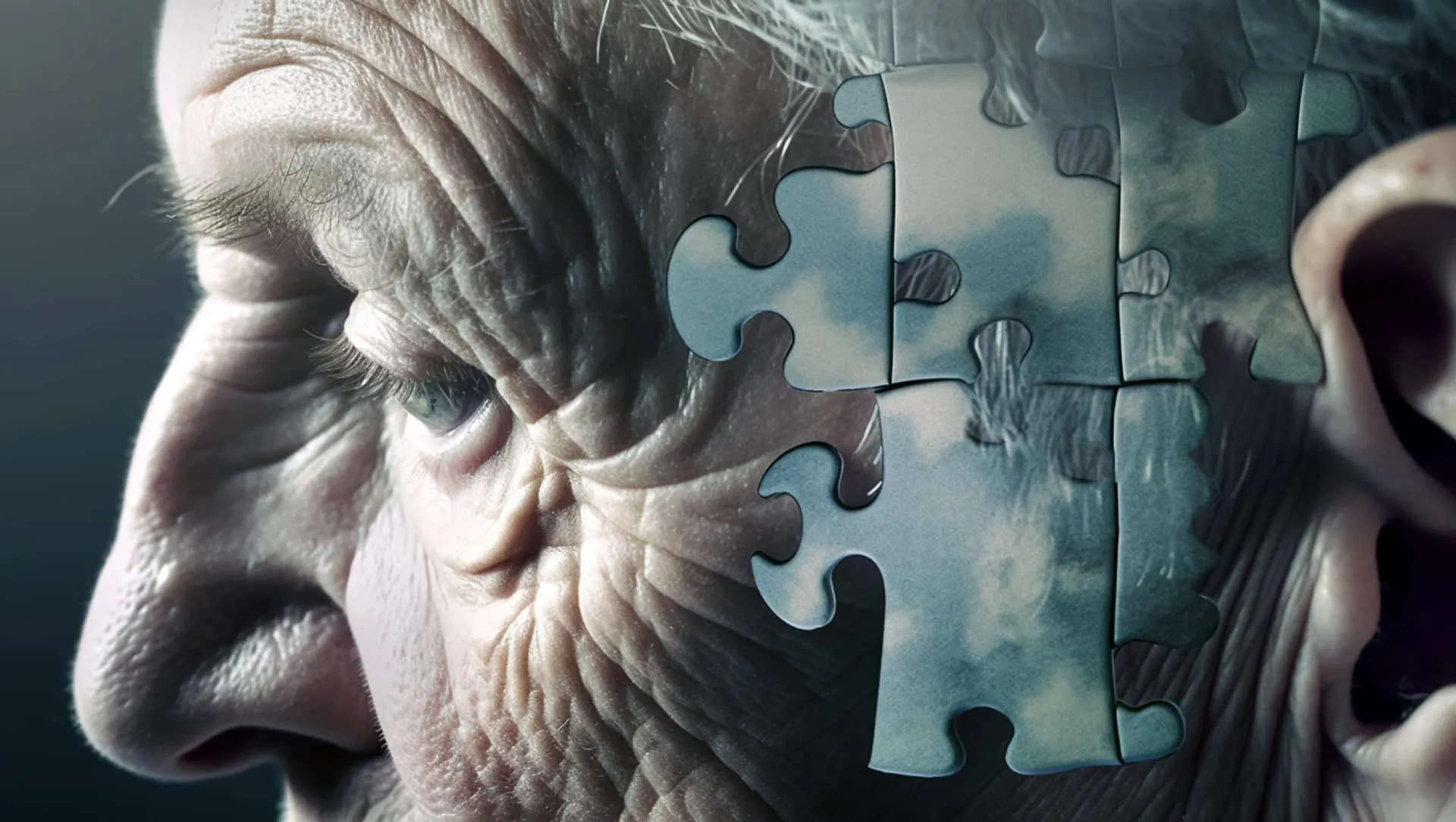Share
Neuropathic Pain And Medical Cannabis
Pain is described as “An unpleasant sensory and emotional experience associated with actual or potential tissue damage” (Raja et al., 2020). The feeling of pain, although unwelcome, is of vital importance as it signals that something might be wrong and you should do something about it. The sensation of pain is linked to the activation of receptors in the primary afferent fibers (axons of sensory neurons), which include the unmyelinated C-fiber and myelinated Aσ-fiber, these receptors remain dormant in homeostasis and are activated in case of damage or potentially damaging stimulus, sending the signals to the spinal cord or brain.
The previously mentioned somatosensory receptors are part of the somatosensory system, and through this system we perceive touch, pressure, pain, temperature, position, movement and vibration. The process begins with a stimulus received by the somatosensory nerves, which is then transmitted to the thalamus and then directed to the cerebral cortex. This signalling flow can be disrupted by lesions and diseases, resulting in abnormal signal processing into the spinal cord and the brain and thus a loss or severe reduction in function, in some cases as a result of the lesion, pain develops, a condition known as neuropathic pain.
Neuropathic pain has had distinct definitions, but the most accepted is pain caused by a lesion or disease of the somatosensory system, it is a chronic condition and brings substantial detriment to the quality of life of the patients. The root causes of Neuropathic pain can be both physical events and underlying diseases such as:
- Autoimmune diseases (multiple sclerosis, Parkinson), metabolic issues (diabetic neuropathy), infections (shingles and postherpetic neuralgia)
- Nerve injuries from trauma or surgery including postherpetic neuralgia, trigeminal neuralgia, diabetic neuropathy, and chronic pain after stroke (central poststroke pain)
Unlike inflammatory pain caused by chemical changes at the site of inflammation, neuropathic pain stems from nerve damage, a crucial distinction for diagnosis and treatment.
References
- Raja, S.N., Carr, D.B., Cohen, M., Finnerup, N.B., Flor, H., Gibson, S., Keefe, F.J., Mogil, J.S., Ringkamp, M., Sluka, K.A., Song, X.-J., Stevens, B., Sullivan, M.D., Tutelman, P.R., Ushida, T. and Vader, K. (2020). The revised International Association for the Study of Pain definition of pain: concepts, challenges, and compromises.
Pain,[online]161(9).doi:https://doi.org/10.1097/j.pain.0000000000001939.
- Colloca, L., Ludman, T., Bouhassira, D., Baron, R., Dickenson, A.H., Yarnitsky, D., Freeman, R., Truini, A., Attal, N., Finnerup, N.B., Eccleston, C., Kalso, E., Bennett, D.L., Dworkin, R.H. and Raja, S.N. (2017). Neuropathic pain. Nature Reviews Disease Primers, 3(1). doi:https://doi.org/10.1038/nrdp.2017.2.
- Finnerup, N.B., Kuner, R. and Jensen, T.S. (2021). Neuropathic Pain: From Mechanisms to Treatment. Physiological Reviews, [online] 101(1), pp.259–301. doi:https://doi.org/10.1152/physrev.00045.2019.
- Campbell, J.N. and Meyer, R.A. (2006). Mechanisms of Neuropathic Pain.Neuron,52(1),pp.77–92.doi:https://doi.org/10.1016/j.neuron.2006.09.021.
Regarding Cannabinoids and Neuropathic Pain
Mechanisms and pathophysiology
Chronic neuropathic pain has a higher prevalence in women with 8% versus 5% in men, and in patients above 50 years of age. Typically, the affected regions of the body include the lower back and lower limbs, neck and upper limbs, with the most frequent cause of chronic neuropathic pain being lumbar and cervical radiculopathies (conditions where a nerve root gets pinched or compressed). Patients can experience a distinct set of symptoms, ranging from burning and electrical like sensations, to pain resulting from non-painful stimulations (such as a light touch); the symptoms are persistent and have a tendency to become chronic and less responsive to pain medications.
Neuropathic pain can be broadly categorized into two main types: central and peripheral. Central neuropathic pain or just central pain arises from lesions or diseases affecting the central nervous system (CNS)
Impacted regions in the Central Nervous System:
Brain Regions:
– Central somatosensory pathways
– Thalamus
– Pontine and medullary parts of the brain stem
Spinal Cord Regions:
– Various segments affected by injury or specific disease
Peripheral neuropathic pain stems from disorders affecting the peripheral nervous system, these predominantly involve small unmyelinated C fibers and myelinated A fibers, namely, the Aβ and Aδ fibers.
Peripheral neuropathic pain is becoming more prevalent worldwide due to the aging population, increased incidence of diabetes mellitus, and rising rates of cancer, which affect all sensory fibers. This type of neuropathic pain can be further subdivided into two main categories depending on their distribution: generalized or focal.
Generalized peripheral neuropathic pain typically has a symmetrical distribution and derives from conditions such as:
- Diabetes Mellitus and Prediabetes: Associated with metabolic dysfunctions.
- Infectious Diseases: Mainly HIV infection and leprosy.
- Chemotherapy: Leading to nerve damage affecting all sensory fibers.
- Immune and Inflammatory Disorders: Such as Guillain-Barré syndrome.
- Inherited Neuropathies and Channelopathies: For example, inherited erythromelalgia, a disorder characterized by blood vessel blockage followed by hyperemia and inflammation.
Focal peripheral neuropathic pain results from lesions or diseases affecting a specific area of the peripheral nervous system. Common causes include:
- Surgery or Trauma: Nerve damage during surgical procedures or due to physical trauma can lead to chronic neuropathic pain. This category includes conditions such as phantom limb pain, which often manifest after an aputation.
The main mechanism underlying pain in post-traumatic nerve injury is linked to ectopic impulses, generated at the site of nerve injury or the dorsal root ganglion (DRG). This is supported by the temporary relief from pain following surgical removal of neuromas (neural sprouts developing at the proximal end of a transected nerve) and peripheral nerve blocks.
Summary Table of Peripheral Neuropathic Pain
| Category | Description | Examples/Conditions |
|---|---|---|
| Generalized Distribution | Symmetrical distribution of neuropathic pain affecting multiple areas. | – Diabetes mellitus, prediabetes- HIV infection, leprosy- Chemotherapy-induced neuropathy- Guillain-Barré syndrome- Inherited erythromelalgia |
| Focal Distribution | Localized neuropathic pain due to specific nerve damage or lesions. | – Post-surgical nerve injury- Traumatic nerve injury- Phantom limb pain following amputation- Neuromas, ectopic impulses at injury site |
Cannabinoid Therapeutics in Chronic Neuropathic Pain
Even though Neuropathic Pain (NP) is a prevalent condition, with the currently available treatments being limited to symptom management. Even so, only 1 out of 3 patients experiences significant pain relief. Both pharmacological and non-pharmacological approaches are available.
The table summarizes the recommended pharmacological therapies
| Treatment Line | Medication Class | Examples | Notes |
|---|---|---|---|
| First-Line | Tricyclic antidepressants (TCAs) | Amitriptyline | |
| Serotonin-norepinephrine reuptake inhibitors (SNRIs) | Duloxetine, Venlafaxine | ||
| Gabapentinoids | Gabapentin, Pregabalin | ||
| Second-Line | Weak opioid analgesics | Tramadol, Tapentadol | Peripheral NP only |
| Second-Line (Pharmacological) | Topical agents | Lidocaine plaster, Capsaicin patch | Peripheral NP only |
| Third-Line | Strong opioids | Morphine, Oxycodone | Central and Peripheral NP |
| Third-Line | Botulinum toxin type A (BoNTA) | – | Peripheral NP only |
| Trigeminal Neuralgia (TN) | First-Choice | Carbamazepine, Oxcarbazepine |
Challenges and Inefficacies:
- High failure rates with current medications, highlighting the need for more effective treatment options.
- Medications primarily target symptoms, not the underlying causes of NP.
Benefits:
- Pharmacological therapies offer a non-invasive approach to managing NP for some patients.
- A variety of medication classes provide options for tailoring treatment to individual needs and tolerability.
Non-Pharmacological Therapeutic Options:
- Interventional therapies: Nerve blocks, steroid injections, and neurostimulation to modulate pain signals.
- Physical therapies: Massage, ultrasound, TENS, and exercise training can improve pain perception and function.
- Psychological therapies: Cognitive and behavioural therapy (CBT) as well as other psychological interventions to help patients cope with the emotional impact of chronic pain.
In the last decade the interest in the use of cannabis and cannabinoids for the treatment of neuropathic pain as increased significantly, especially the use of synthetic cannabinoids containing only tetrahydrocannabinol (THC) and medicinal extracts containing a combination of THC and cannabidiol (CBD).
Studies suggest that cannabinoid receptors, particularly CB1 and CB2, have a role in modulating neuropathic pain as activating these receptors leads to inhibitory effects in pain response. This analgesic effect might be due to the interaction of endocannabinoids, the body’s natural cannabinoids, with various other receptor systems involved in pain perception. These include gamma-aminobutyric acid (GABA), serotonergic, adrenergic, and opioid receptors, which are all targeted by common medications already in use to manage neuropathic pain.
Cannabinoids:
THC:
- Reduces chronic neuropathic pain symptoms (allodynia and hyperalgesia) – acts on CB1R and CB2R receptors, reduces neurotransmitter release (glutamate), TRPM8 antagonist, TRPA1 agonist.
- Inhibits COX-2, leading to increased levels of AEA (anandamide) and decreased prostaglandins (involved in inflammatory pain).
- May cause psychoactive side effects like anxiety, disorientation, confusion (especially at high doses).
CBD:
- Increases mechanical and thermal pain thresholds.
- Possibly works by increasing AEA levels due to FAAH inhibition and TRPV1 agonism.
- May decrease CB1R expression in pain matrix regions.
CBN and CBC:
- May also play a role in pain reduction (CBN as CB2R agonist, CBC inhibiting cyclooxygenase)
Other Cannabis Compounds:
- Terpenes:
- Beta-caryophyllene (CB2R agonist) reduces nociceptive hyperalgesia and mechanical allodynia, decreases microglial reactivity and inflammatory response.
- Beta-myrcene and alpha-pinene may also have anti-inflammatory properties.
- Flavonoids:
- Have anti-inflammatory properties and can decrease the release of pro-inflammatory cytokines.

Studies:
- Studies with isolated CBD and THC showed some effectiveness in reducing neuropathic pain in rats.
- Studies with whole cannabis extract (including CBD and THC) were more effective than isolated cannabinoids for pain reduction in rats.
- Sativex® (oromucosal spray with 1:1 CBD:THC) was more effective for treating chronic neuropathic pain than synthetic THC (Dronabinol) in human trials.
- A study using Sativex® showed a decrease in pain intensity and improvement in patient well-being (including reduced stress, depression and anxiety) in patients with neuropathic and mixed pain.
- Cannabis use may lead to a significant decrease or elimination of opioids needed for pain management.
Important Points:
- The entourage effect: The synergistic action of multiple cannabis compounds may be more effective than isolated cannabinoids.
- More research is needed, especially high-quality clinical trials.
- Adverse effects can occur, mostly mild to moderate and related to THC dosage (dry mouth, dizziness, fatigue). Psychoactive effects are less common.
References
Meng, H., Johnston, B., Englesakis, M., Moulin, D.E. and Bhatia, A. (2017). Selective Cannabinoids for Chronic Neuropathic Pain. Anesthesia & Analgesia, 125(5), pp.1638–1652. doi:https://doi.org/10.1213/ane.0000000000002110.
Boychuk, D.G., Goddard, G., Mauro, G. and Orellana, M.F. (2015). The Effectiveness of Cannabinoids in the Management of Chronic Nonmalignant Neuropathic Pain: A Systematic Review. Journal of Oral & Facial Pain and Headache, 29(1), pp.7–14. doi:https://doi.org/10.11607/ofph.1274.
Blanton, H.L., Brelsfoard, J., DeTurk, N., Pruitt, K., Narasimhan, M., Morgan, D.J. and Guindon, J. (2019). Cannabinoids: Current and Future Options to Treat Chronic and Chemotherapy-Induced Neuropathic Pain. Drugs, 79(9), pp.969–995. doi:https://doi.org/10.1007/s40265-019-01132-x.
Campos, R.M.P., Aguiar, A.F.L., Paes-Colli, Y., Trindade, P.M.P., Ferreira, B.K., de Melo Reis, R.A. and Sampaio, L.S. (2021). Cannabinoid Therapeutics in Chronic Neuropathic Pain: From Animal Research to Human Treatment. Frontiers in Physiology, [online] 12. doi:https://doi.org/10.3389/fphys.2021.785176.
Casey, S. and Vaughan, C. (2018). Plant-Based Cannabinoids for the Treatment of Chronic Neuropathic Pain. Medicines, 5(3), p.67. doi:https://doi.org/10.3390/medicines5030067.
Szok, D., Tajti, J., Nyári, A. and Vécsei, L. (2019). Therapeutic Approaches for Peripheral and Central Neuropathic Pain. Behavioural Neurology, [online] 2019, p.8685954. doi:https://doi.org/10.1155/2019/8685954.
Clinical Trials
| Study Title | Study URL | Study Status | Conditions | Study Type | Locations |
|---|---|---|---|---|---|
| Cannabinoids Effects on the Pain Modulation System | https://clinicaltrials.gov/study/NCT02560545 | UNKNOWN | Neuropathic Pain | INTERVENTIONAL | Pain Institute, Tel Aviv Medical Center, Tel Aviv, Israel |
| Effect of Cannabinoids on Pain in Fabry Disease Patients | https://clinicaltrials.gov/study/NCT04820361 | RECRUITING | Pain, Neuropathic | INTERVENTIONAL | University Hospital Zürich USZ, Zürich, Switzerland |
| Sativex for Treatment of Chemotherapy Induced Neuropathic Pain | https://clinicaltrials.gov/study/NCT00872144 | COMPLETED | Neuropathic Pain | INTERVENTIONAL | Queen Elizabeth II Health Sciences Centre, Pain Management Unit, Halifax, Nova Scotia, B3H 2Y9, Canada |
| Effect of Cannabis and Endocannabinoids on HIV Neuropathic Pain | https://clinicaltrials.gov/study/NCT03099005 | COMPLETED | Cannabis | HIV Neuropathy | Pain Syndrome |
| An Observational Post-Marketing Safety Registry of Sativex® | https://clinicaltrials.gov/study/NCT02073474 | COMPLETED | Multiple Sclerosis | Diabetes | Cancer |
| Proof of Concept Trial of Cannabis Derivatives in Neuropathic Pain | https://clinicaltrials.gov/study/NCT05351801 | ACTIVE_NOT_RECRUITING | Diabetic Neuropathic Pain | INTERVENTIONAL | VA San Diego Healthcare System, San Diego, CA, San Diego, California, 92161-0002, United States |
| Trial of Dronabinol and Vaporized Cannabis in Chronic Low Back Pain | https://clinicaltrials.gov/study/NCT02460692 | COMPLETED | Cannabis | Low Back Pain | Neuropathic Pain |




